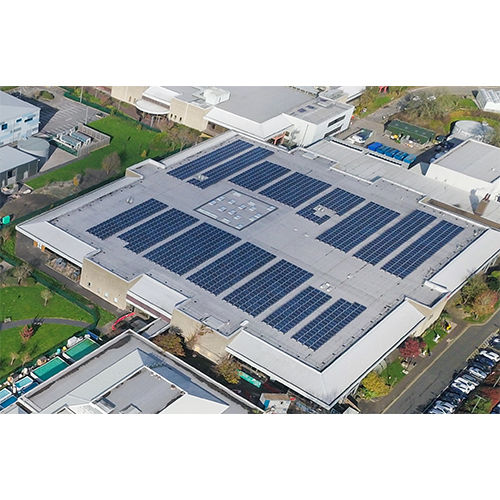
Solar Installation and Commissioning
Product Details:
Solar Installation and Commissioning Price And Quantity
- 1 Unit
Product Description
- Solar Installation and Commissioning
Solar installation and commissioning are crucial steps in the process of implementing a solar energy system. This involves the physical installation of solar panels, electrical components, and associated equipment, followed by a series of tests and inspections to ensure proper functioning and compliance with safety standards. Here is an overview of solar installation and commissioning:
1. Site Assessment: Before installation, a thorough site assessment is conducted to determine the suitability and feasibility of installing a solar energy system. Factors such as solar irradiance, shading, roof condition, structural integrity, electrical infrastructure and running load profile are evaluated to optimise the system's performance.
2. Design and Engineering: Based on the site assessment, a detailed design is created to determine the optimal placement and configuration of solar panels, inverters, mounting structures and electrical components. The design ensures maximum energy generation and adherence to regulations and building codes.
3. Procurement and Logistics: Once the design is finalised, solar panels, inverters, mounting hardware, wiring, and other necessary components are procured. Proper logistics management ensures timely delivery of equipment to the installation site.
4. Installation: The installation process involves mounting solar panels on the roof or other suitable structures, connecting them in series and parallel configurations, and integrating the system with the electrical infrastructure. This includes wiring, earthing, and installation of inverters, combiner boxes, meters, and other electrical components.
5. Electrical Connections and Testing: After installation, electrical connections are made to link the solar system to the main electrical panel or grid connection. This includes wiring, breaker installation, and proper earthing. Once the connections are complete, a series of electrical tests are conducted to ensure proper functionality, including voltage checks and current measurements.
6. Commissioning and System Testing: Once the electrical connections are verified, the solar energy system undergoes a thorough commissioning process. This involves testing the structure, system's performance, verifying power output, and conducting functionality tests for inverters, monitoring systems, and other components. Any issues or discrepancies are addressed and rectified during this phase.
7. Safety Inspections and Permits: Solar installations require inspections and permits to ensure compliance with safety standards and regulations. The authorities or third-party inspectors may conduct inspections to verify proper installation, electrical safety, and adherence to relevant codes. Permits may need to be obtained before the system is fully operational.
8. Handover and Documentation: Once the installation and commissioning process is complete, the solar energy system is handed over to the owner or operator. Documentation, including manuals, warranties, as-built drawings, and maintenance guidelines, and proper training is provided to ensure proper operation and future maintenance.
Solar installation and commissioning play a critical role in the successful implementation of a solar energy system. By following industry best practices, adhering to safety standards, and conducting thorough testing and inspections, solar installations can ensure optimal performance, energy generation, and long-term reliability.
 |
MITTALS GREEN ENERGY PRIVATE LIMITED
All Rights Reserved.(Terms of Use) Developed and Managed by Infocom Network Private Limited. |
 English
English Spanish
Spanish French
French German
German Italian
Italian Chinese (Simplified)
Chinese (Simplified) Japanese
Japanese Korean
Korean Arabic
Arabic Portuguese
Portuguese

 Send Inquiry
Send Inquiry Send SMS
Send SMS Call Me Free
Call Me Free